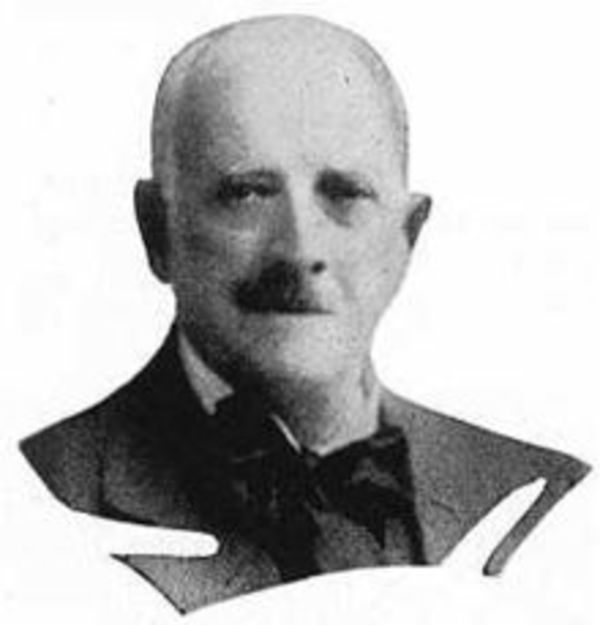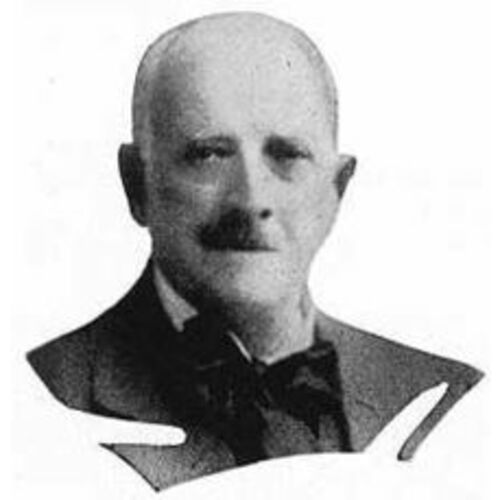
Source: Courtesy of Wikimedia Commons
GAGNON, GUSTAVE (baptized Gustave-Adolphe-Mathurin), organist, teacher, university administrator, and composer; b. 6 Nov. 1842 in the parish of Saint-Antoine-de-la-Rivière-du-Loup (Louiseville), Lower Canada, youngest of the nine children of Charles-Édouard Gagnon, a notary, and Julie-Jeanne Durand; m. 9 July 1873, in Quebec City, Séphora Hamel, daughter of merchant Abraham Hamel and niece of artist Théophile Hamel*, and they had two sons and two daughters; d. there 19 Nov. 1930.
The younger brother of musician and folklorist Ernest Gagnon*, Gustave Gagnon completed the classical studies course at the Collège Joliette and received musical training in Montreal from his brother-in-law Paul Letondal, a blind French émigré who would become a distinguished pianist, cellist, and organist. Gagnon was active over a long period as an organist at Saint-Jean-Baptiste church (1864–70) and at Notre-Dame basilica (1876–1915), both in Quebec City. Like his brother Ernest and others of his generation, he furthered his education in Europe; he was there from 1870 to 1872. In Paris he studied organ with Charles-Alexis Chauvet, piano with Antoine-François Marmontel, and harmony with Auguste Durand. Later in Liège, Belgium, he studied piano with Félix-Étienne Ledent and harmony with Jean-Théodore Radoux. During the summer holidays of 1871 and 1872 he visited the German musical centres of Dresden and Leipzig, where he received organ lessons from Benjamin Robert Papperitz and Louis Plaidy. Highlights of his European sojourn were his meetings with Camille Saint-Saëns and Franz Liszt. He met Liszt first in Rome and later had the opportunity in Leipzig to attend a rehearsal of Liszt’s Legend of St Elizabeth with the composer conducting.
On his return to Quebec Gagnon began a long, distinguished career as an educator and a few years later he again took up a position as organist. A founder, with Ernest, of the Académie de Musique de Québec in 1868 in order to set province-wide standards and examinations, Gagnon was throughout his career a devoted and high-principled teacher. His students included Joseph-Daniel Dussault, later organist at Notre-Dame church in Montreal, Léo-Pol Morin*, a pianist and influential music critic, and his own son Henri*, who would succeed his father in 1915 as organist at the basilica and hold the post to 1961. Gagnon also taught at the École Normale Laval and the Petit Séminaire de Québec and he helped to establish and taught at the branch of the Dominion College of Music in Quebec City.
Spanning a 60-year period, Gagnon’s work as a musician and teacher was highly regarded and recognized. His appointment in 1922 as the first director of the newly formed École de Musique at the Université Laval, where he taught until 1930, is ample testimony of the esteem in which he was held. As the school’s first director, he had a major impact on curriculum; importance was attached to church music, such as plainchant and organ music. He was considered a knowledgeable and compassionate teacher and a fine administrator.
As a composer, Gagnon is remembered today for several piano compositions, notably Reflets du passé and Souvenirs de Leipzig, both in the tradition of the 19th-century descriptive, often virtuosic, character-piece for piano. Also well known is his Marche pontificale, composed for either piano or organ and later orchestrated by Joseph Vézina. Gagnon’s church music includes a harmonized setting of the popular plainchant Messe royale by the 17th-century French composer Henry de Thier, dit Du Mont. This work was performed in June 1880 on the Plains of Abraham by a 600-voice choir at the same celebrations that included the inaugural performance of Calixa Lavallée*’s O Canada.
Often discussed in conjunction with the achievements of his brother Ernest – their lives shared many parallels – Gustave Gagnon’s career was marked by unusually long, sustained musical productivity, which contributed to a lasting legacy of high standards in church music and organ performance through the 20th century in French Canada.
ANQ-MBF, CE401-S15, 6 nov. 1842. ANQ-Q, CE301-S1, 9 juill. 1873. Le Devoir, 19 nov. 1930. Encyclopedia of music in Canada (Kallmann et al.). Arthur Letondal, “Gustave Gagnon,” La Rev. moderne (Montréal), 2 (1921), no.8: 13–14. J.-M. Turgeon, Les vendredis de l’oncle Gaspard (Québec, 1944), 193–200.
Cite This Article
Gordon E. Smith, “GAGNON, GUSTAVE (baptized Gustave-Adolphe-Mathurin),” in Dictionary of Canadian Biography, vol. 15, University of Toronto/Université Laval, 2003–, accessed January 18, 2026, https://www.biographi.ca/en/bio/gagnon_gustave_15E.html.
The citation above shows the format for footnotes and endnotes according to the Chicago manual of style (16th edition). Information to be used in other citation formats:
| Permalink: | https://www.biographi.ca/en/bio/gagnon_gustave_15E.html |
| Author of Article: | Gordon E. Smith |
| Title of Article: | GAGNON, GUSTAVE (baptized Gustave-Adolphe-Mathurin) |
| Publication Name: | Dictionary of Canadian Biography, vol. 15 |
| Publisher: | University of Toronto/Université Laval |
| Year of publication: | 2005 |
| Year of revision: | 2005 |
| Access Date: | January 18, 2026 |



